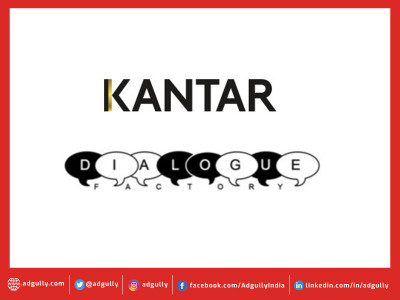Rural on the brink of an e-commerce revolution; FMCG witnessing resurgence
Kantar along with GroupM’s rural and experiential marketing unit, Dialogue Factory, has unveiled the latest edition of the Rural Barometer Report. This is the third edition of this report, which is released twice every year. It explores concerns about the post pandemic impact on consumer behaviour and purchase patterns across rural India.
Dalveer Singh, Head of Experiential Marketing - APAC, Dialogue Factory, said, “The pandemic has changed ways of living for rural India. We see our rural citizens more vigilant about their consumption patterns. As per the Rural COVID Barometer Report 2021, rural India is more confident in recovery and adopting new technology and putting it to the right use. There are existing concerns like nutrition and health of children in rural areas but thanks to Government intervention, rural purchasing power has improved. Close to a fifth of Rural India is concerned about the health parameters of their children. We’ve also witnessed rebalancing in FMCG spending. With technology penetrating further and rural consumers evolving in this digital and e-commerce led era, we see a brighter tomorrow in rural regions.”
Key highlights:
- Health and nutrition: The findings show that the nutrition and health of 1 in 5 children is of concern. Due to continued patriarchal notions, the girl child is not being provided a sufficient protein based diet.
While the primary health concern for boys is weight improvement, in the case of girls’ immunity is an important concern apart from weight. The consumption of animal products (chicken/ meat/ milk/ eggs and/ or other dairy products) and fruits is significantly lower in households.
- Job security continues to be a concern today: Lower social classes (NCCS CDE) and rural youth (18-24 year olds) have been the most affected in terms of sentiments regarding job security. Perceptions of job security are below the national average in states of Gujarat, Kerala and Tamil Nadu. While in Maharashtra, Andhra Pradesh, Telangana, Karnataka, Punjab, Haryana and Himachal Pradesh, they are above the national average.
- Digital consumption has shifted beyond basic services such as entertainment and social media to more economically valuable information and services: The rural population is now looking at digital as a medium that provides economically valuable information/services. More vocational information is being consumed via the internet, though entertainment and social media remain the dominant factors of internet usage.
There is an emerging constituency of technology-enabled farmers, who are using digital apps to track their crops. The Rural Barometer indicates that 5% of Farmers were using Crop Monitoring Apps and this digital adoption for crop monitoring is the strongest in states of Karnataka, Punjab, Haryana and Gujarat.
- 3-fold growth in the usage of ecommerce apps: Rural India is on the periphery of an e-commerce revolution. The report states that there has been a massive increase in the number of users of e-commerce apps in the last 6-8 months. Digital financial inclusion continues to see a growing footprint and payment apps especially have created a fertile ground for the advancement of e-commerce to rural hinterlands.
- FMCG witnessing the resurgence of indulgence & vanity categories: The pandemic had profoundly changed the FMCG spending of Rural India. Through the lockdown and first half of 2021, consumers continued to prioritize health and hygiene categories under uncertain financial circumstances. As a result, indulgence and vanity categories remained subdued until the first half of 2021. The report shows a rebalancing of the FMCG spends. Food categories such as biscuits and chocolates, snacking, etc., and personal care & beauty categories bounced back and show positive momentum for growth.
Puneet Avasthi, Senior Director - Specialist Businesses, Insights Division at Kantar, said, “This edition of the Rural Barometer Report is a mix of positives and concerns. Job security and children’s health are two of the key issues facing rural India. Lower social classes (NCCS CDE) and rural youth (18-24 years) have been the most affected in terms of sentiments regarding job security. While these concerns remain, we are optimistic that there will be recovery in these areas as we have seen rural India being the most resilient during the pandemic. FMCG has shown signs of a bounce back, as rural consumers expand their spend basket to add back personal care and snacking products like biscuits and chocolates. However, inflation could be a dampener.”
- Growing demand for construction and home improvement sectors: Average monthly household income in rural India has increased marginally between July 21 and December 21. Further, on the back of myriad DBT support, average monthly household expenditure has fallen marginally in rural India. The positive impact of DBT schemes such as enhanced NREGA wage rates, PM Kisan, Free Food Grains Program and Pradhan Mantri Awaas Yojana (Gramin) coupled with a good Kharif crop, on rural savings and consequent spends on big-ticket items such as smart phones, electrical fittings, construction, and insurance has been robust.
With an increased surplus income, rural India has prioritized connectivity and construction for future purchases. The smartphone category will continue to grow in rural markets. Additionally, spending on home construction/ improvement and two-wheeler purchases is likely to grow in the next six months. With construction-related activities showing higher prioritization in both the last 6 months and the next 6 months, consumption of cement and steel should remain strong in Rural India.




Share
Facebook
YouTube
Tweet
Twitter
LinkedIn